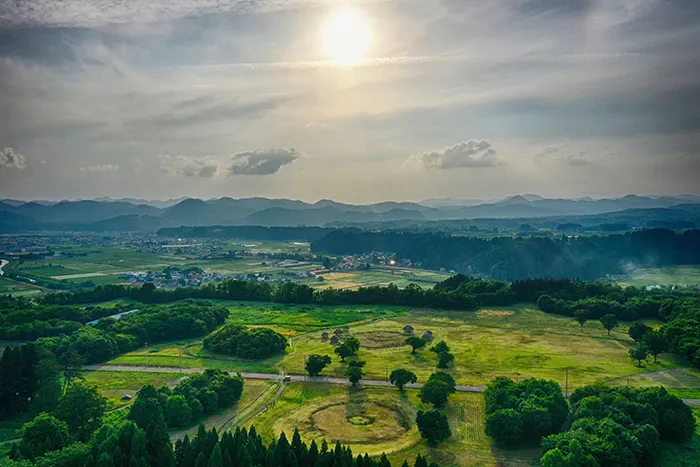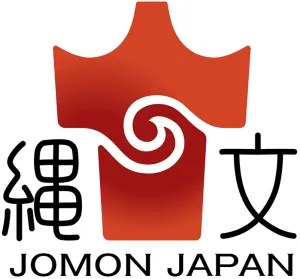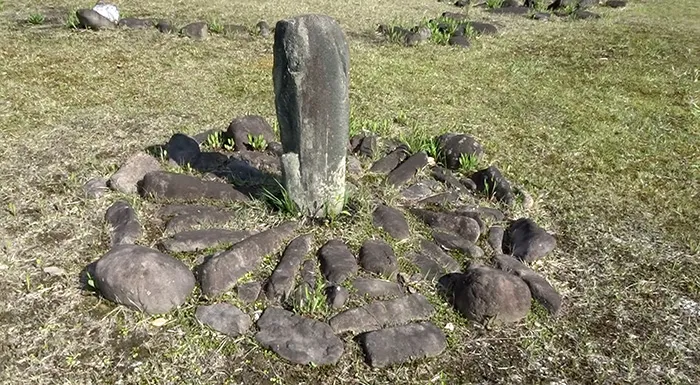Jomon Stone Circles: Unraveling the Mysteries of Prehistoric Japan
Monumental Legacy of the Jomon People
The Jomon peoples of northern Japan were unique among foraging societies for their large-scale monument-building. They constructed various ceremonial and ritual sites, including stone circles, wooden pillar arrangements, shell middens, and bank-enclosed cemeteries. These structures indicate their ability to undertake significant labor investments and advanced planning—attributes often linked to agricultural societies rather than hunter-gatherers.
ALSO READ: Ötzi’s 5,300 years old Alps Iceman who lived between 3350 and 3100 BC
The Significance of Jomon Monuments
Jomon monuments highlight an emphasis on ritual, ceremonial activities, and a strong connection to specific landscapes. These sites provide insights into Japan’s longest archaeological period, spanning from approximately 14,500 BC to 300 BC, with stone circles primarily dating between 2500 BC and 300 BC. In recognition of their historical importance, 17 Jomon sites in northern Japan were granted World Heritage status in 2021.

Understanding Jomon Stone Circles
Japanese stone circles consist of concentric rings of stones, varying in size from a few kilograms to over 100kg. Unlike the massive megalithic structures of Europe, such as Stonehenge, these sites still share similarities, including astronomical alignments and their use in seasonal ceremonies, ancestor worship, and burials.
William Gowland: A Bridge Between Japan and Stonehenge
The study of Japanese stone circles intersects with the history of European archaeology through William Gowland (1842–1922), a Victorian mining engineer who spent 16 years in Japan during the Meiji era. Gowland studied around 400 mounded tombs in Japan before returning to Britain, where he applied his expertise to the study of Stonehenge. He was the first to argue that Stonehenge was built by people without metal tools and drew parallels between sun worship in prehistoric Britain and Japan.

World Heritage status in 2021
Notable Jomon Stone Circle Sites
Oyu Stone Circles (Akita Prefecture)
Among the most famous Jomon sites are the twin stone circles at Oyu, known as the Manza and Nonakado circles, constructed between 4,200 and 2,700 years ago. Discovered in 1931, these circles consist of concentric stone arrangements surrounding a central sundial-like feature. High phosphate levels beneath some stones suggest that they originally marked burials. Recent studies indicate alignments with the midwinter sunrise, hinting at their ceremonial significance.

Isedotai Stone Circles (Aomori Prefecture)
Located about 100km from Oyu, the Isedotai site contains four stone circles—the only known cluster of its kind in Japan. These circles range from 32m to 45m in diameter and were discovered during road construction, leading to the road’s rerouting to preserve the site. The site also includes post-built buildings, grave pits, storage pits, and a rare linear ditch over 100m long.


Omori-Katsuyama Stone Circle (Aomori Prefecture)
Discovered in the 1950s, the Omori-Katsuyama stone circle dates to approximately 3,000 years ago, during the Final Jomon phase (1000-300 BC). Uniquely positioned at the base of Mount Iwaki, an extinct volcano, the site appears aligned with the winter solstice sunset. Before construction, the terrace was leveled, and excavation revealed pottery vessels, stone tools for food preparation, and a large pit house nearby.

Conclusion: A Window into Prehistoric Rituals
Jomon stone circles provide a fascinating glimpse into the rituals and cultural practices of prehistoric Japan. Their astronomical alignments, burial practices, and association with ceremonial activities suggest that these monuments played a crucial role in Jomon society. As research continues, these enigmatic structures will further illuminate the lives and beliefs of Japan’s ancient foraging communities.


